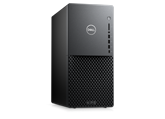

The backlit keyboard is dimmable has little light bleed. After 30 minutes typing on it, I became used to it, while still making a few mistakes here and there. The chicklet-style keyboard is a little spongy for my liking, but it’s not the end of the world. Premium features like a backlit keyboard and a big ‘clickpad’ gives the Dell XPS 13 a distinct, high end look. Just like an SD card reader, that’s another adapter in your bag. However, if you do, you’ll need an adapter for that. If you’re not planning on using an external monitor or projector, it’s no big deal. When you look at how thin the XPS 13 is, you can understand why they couldn’t fit more into the thin package, but I would have liked to see an SD card slot and HDMI instead of DisplayPort. The USB 2.0 Power Share plug allows you to charge a USB gadget while the computer is turned off or sleeping. It’s noticeably faster than hybrid hard drive I sport in my current 11.6” Core i7 notebook from 2010.įitting all of the usual ports you find in a laptop would be impossible in such a small package as this, so you won’t find oodles of ports and options here. Much of this speed boost can be attributed to the fast SSD featured in the XPS. It’s also worth noting that Dell offers upgrade options to a Core i7 & 256GB SSD at $1499, though you’ll still be stuck with 4GB memory. I’ve clocked boot-up times in the 16 second range, wake from sleep in about 2 seconds, and programs start up in a flash.įor day to day tasks such as web surfing, basic photo editing, and media management, it’s the kind of speed you usually expect from a desktop, but in a tiny form factor. In terms of real world performance, it flies.

Our unit sports an Intel Core i5-2467M 1.6GHz (Turbo Boost 2.0 up to 2.30 GHz), 4GB DDR3 Memory, and a 128GB SSD for $999, though we’ve seen it go for under $900.


 0 kommentar(er)
0 kommentar(er)
